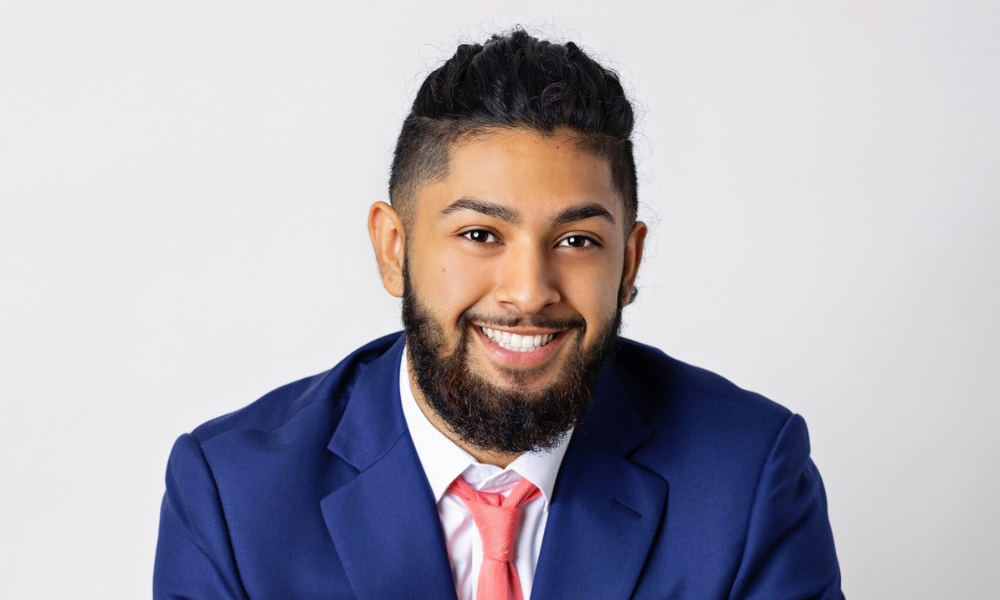Accessibility starts with meeting buyers where they are, says Martin De La Garza as he advocates for marginalized communities in the housing market

Translating mortgage documents alone isn’t sufficient when serving two distinct underserved communities - Deaf and Latino homebuyers. For an industry built without them in mind, true accessibility means speaking their language.
For many aspiring homeowners, navigating the mortgage process is already challenging. But for non-English speakers and the Deaf and hard-of-hearing communities, it could feel even more daunting. Martin De La Garza (pictured), of Motto Mortgage Best Life, is on a mission to change that. Through multilingual support and American Sign Language (ASL) accessibility, his main goal is to make homeownership possible for more people.
De La Garza brings a deeply personal approach to his work, with a sense of dedication that fuels his drive to make the mortgage process more accessible. Having witnessed firsthand how language barriers prevent many from achieving homeownership, he set out to change the industry from within.
Breaking down language barriers
"Language barriers play a huge role in the accessibility of information. I’m fluent in Spanish and proficient in ASL, and I see firsthand how many buyers struggle to understand the process when resources aren’t provided in their preferred language," De La Garza said. “I’ve had clients tell me they signed paperwork without fully understanding it because there was no one to explain it to them in a way that made sense. That’s unacceptable. My job is to make sure they know exactly what they’re agreeing to before they sign anything."
De La Garza lives just 30 minutes from the Oklahoma School for the Deaf. His connection to the community sparked his passion for learning ASL and helping Deaf individuals navigate homeownership.
"Many people assume that American Sign Language (ASL) is just a signed version of English, but that’s not true," he said. "ASL has its own grammar and structure. If you hand a Deaf client a document in English, they may be able to read it, but that doesn’t necessarily mean they fully understand it. That’s why I take the time to explain mortgage terms in ASL, ensuring they have the same level of understanding as anyone else. A home purchase is too big of a decision to leave anything unclear."
Through personalized consultations and visual-based educational resources, De La Garza ensures the Deaf and hard-of-hearing community has clear, digestible information tailored to their communication needs.
Expanding accessibility for Spanish-speaking buyers
De La Garza’s commitment to accessibility goes beyond ASL. He also prioritizes support for Spanish-speaking homebuyers, who often struggle to find clear, understandable mortgage information. Government resources and mortgage materials are overwhelmingly written in English, and even when translations exist, they’re often too technical or unclear.
"A lot of Spanish-speaking homebuyers are left to figure things out on their own; I’ve had clients tell me they tried using online translators to understand documents, but the translations were full of mistakes or didn’t make sense. That’s not good enough," he said. “I make sure my Spanish-speaking clients fully understand the process by explaining everything in their native language. Buying a home is one of the biggest financial decisions they’ll make. They deserve to feel confident in their choices, not just hope they understood everything correctly."
His outreach doesn’t stop at individual consultations. Through digital content, social media, and community partnerships, De La Garza is spreading awareness of homeownership programs in both ASL and Spanish, ensuring resources reach those who need them most.
"Education is key," he said. "I can only work with so many clients one-on-one, but if I put out content that explains mortgage basics in Spanish or ASL, that helps thousands of people. I’ve had people message me saying they learned something from a video I posted, and that’s exactly why I do it. If the industry isn’t providing these resources, I will."
Pushing the industry forward
"Everyone deserves access to homeownership, regardless of their language or hearing ability," De La Garza said. "When we eliminate these barriers, we empower people to build stability and wealth through homeownership. The mortgage industry has been slow to change, but that has to stop."
As the industry evolves, De La Garza hopes more professionals will follow his lead by prioritizing true accessibility.
"Lenders and brokers need to prioritize accessibility – whether it’s hiring bilingual staff, offering ASL resources, or making materials more digestible, these small changes make a huge impact. We can’t keep expecting buyers to adapt to us - we have to meet them where they are,” he said.
"I want my clients to feel seen, heard, and understood. No one should feel like homeownership is out of reach just because they don’t speak the dominant language or rely on sign language to communicate. I’m here to make sure they have every opportunity to succeed."



